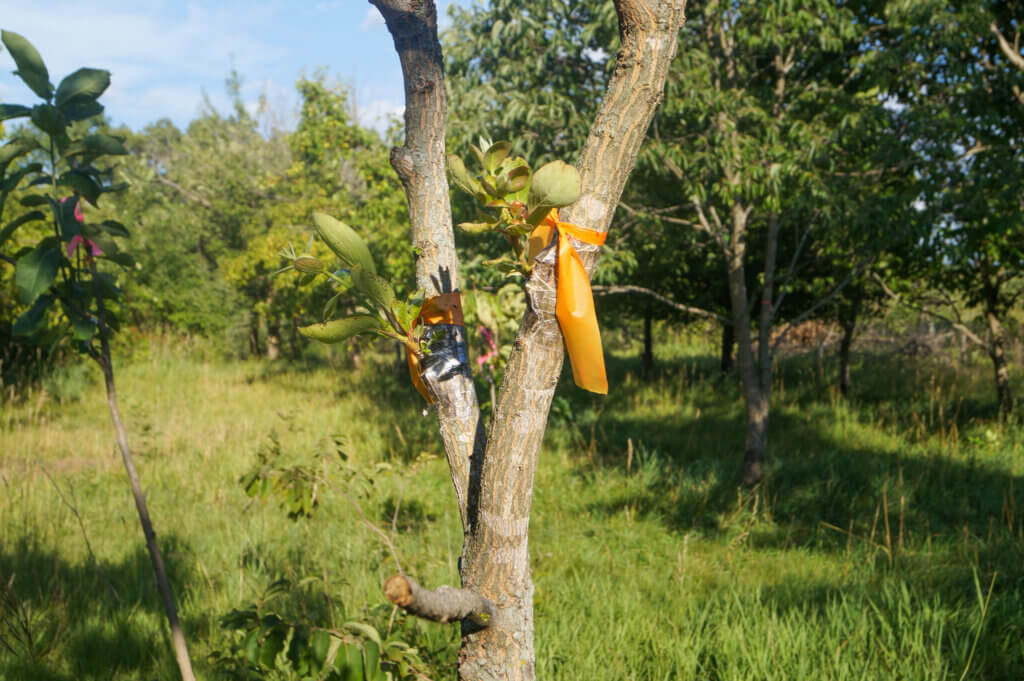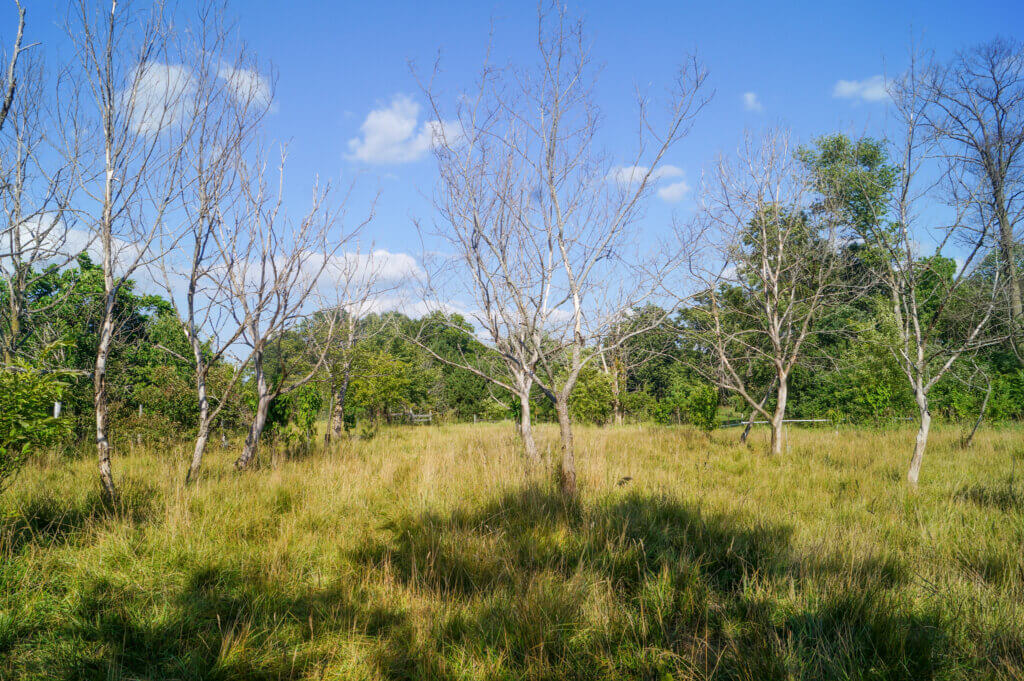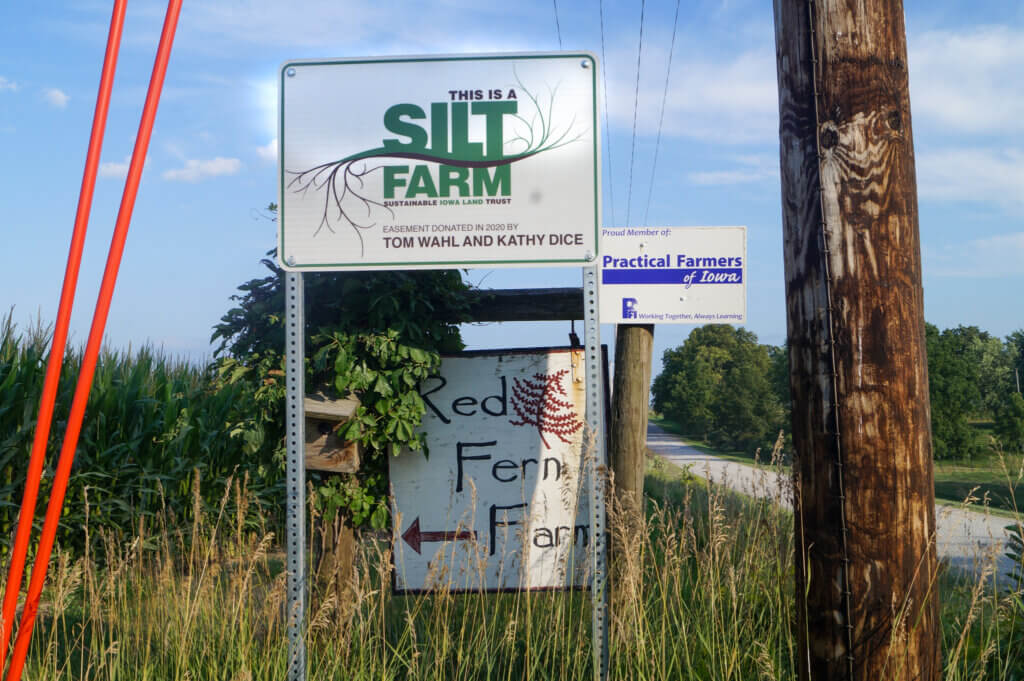Exploring Red Fern Farm: A Thriving Agroforestry Haven in Iowa
In July, AgroForestry Land (AFL) embarked on a visit to Red Fern Farm in Wapello, Iowa. Owned by Tom Wahl and Kathy Dice, this expansive 86-acre agroforestry haven showcases a diverse array of trees and perennial shrubs. The farm’s landscape boasts honeyberries, blueberries, Chinese chestnuts, pawpaws, heartnuts, pecans, persimmons, Asian pears, aronia, black walnuts, and more – a comprehensive representation of perennials suited to Southeastern Iowa.
Within this expanse, you can find various forms of agroforestry practices: riparian buffers, forest farming, windbreaks (shelterbelts), silvopasture, and the earliest form of agroforestry – tree cropping. This ancient practice, which can be observed in tree orchards and vineyards, seamlessly integrates with all other agroforestry methods.
The only primary agroforestry method that can’t be found at Red Fern Farm is alley cropping. Tom and Kathy have cultivated diverse agroforestry systems, but they intentionally omitted alley cropping, one of the USDA’s five highly promoted agroforestry practices, due to its relative profitability and ecological benefits compared to incorporating perennial crops instead of annual crops. Tom noted that while there are a handful of highly promoted methods of agroforestry farming, agroforestry extends beyond these limited categorizations as it is an ever-growing and evolving farming practice.


The journey to transforming their once-corn-and-hay land into a thriving agroforestry farm was neither swift nor effortless. Their journey commenced modestly, with a handful of chestnut trees upon acquiring their land and planting their first one in 1990. They grew from there, continuing to plant a variety of trees year after year until 2001 when they committed to a large-scale tree planting. Since 2001, this has been followed by large annual or biannual tree plantings to meet rising product demand.
Initially, they supplemented tree planting through a nursery business. Once their trees matured, obviating the need for external income, they transitioned away from the nursery. This decision also factored in the physical demands of nursery work, which became more difficult as Tom and Kathy got older.
Progressing steadily over the years, through trial and error, they’ve honed their understanding of what flourishes best on their land. For example, they have discovered that grafted Chinese chestnut trees survive only about 60% of the time, and yield only 20-30% compared to non-grafted Chinese chestnuts. They have also found that grafting success varies drastically between species and graft type (to learn about grafting, visit the University of Missouri Extension’s page on grafting).

Tom shared invaluable insights gathered during their journey, such as discovering that aronia berries’ taste falls short of portrayal, leading to their replacement with honeyberries. Years of experience revealed that using goats for silvopasture posed significant challenges due to their climbing, jumping, and voracious eating habits, prompting a shift to sheep, specifically woolless Katahdin sheep. Sheep offer better grazing control as they are easier to fence and don’t eat as many tree crops as goats, such as pawpaws which are quite profitable. The transformative impact of sheep includes a 95% reduction in mowing, fertilization benefits, and profitable lamb sales.

Midwest hazelnuts fell short of their Oregon counterparts which thrive due to demand and climate disparities, necessitating significant investment for profitable machine harvesting and processing to make up the difference. Chestnuts emerged as the most lucrative product, outpacing all other crops put together. Tom remarked that as of 2022, he could get $165/bushel and 100 bushels/acre. However, chestnuts drop fast with a season usually lasting only 30 days from mid-September to mid-October (one year it only lasted 12 days). Pawpaws, heartnuts, Asian pears, and persimmons follow chestnuts in order of profitability.
Chestnut production demands patience, as it usually takes 3 to 4 years before a chestnut tree produces. Disease vulnerabilities like chestnut blight and oak wilt pose threats to production, with Chinese chestnuts exhibiting higher resilience to these diseases than European or American chestnuts. Pruning chestnuts between March and August causes trees to leak sap, which attracts bugs and encourages infestation. And lastly, Chestnuts and pawpaws (their two most profitable products) synergize well sharing soil and canopy space.


At Red Fern Farm today, their primary source of income lies in its U-Pick operations, where guests can visit and harvest their own produce. Besides U-Pick, other sources of revenue for the farm include scionwood sales (living twigs used to graft on other stocks) which have become highly profitable, sheep sales, and farm tours. Educational initiatives are cost-free, such as field days with the Savanna Institute or the Sustainable Iowa Land Trust (SILT), reflecting Tom and Kathy’s aspiration to exemplify how it is possible to earn a good living farming just a few acres without soil erosion, habitat destruction, expensive machinery, heavy debt, and heavy dependence on fossil fuels and toxic chemicals.

Tom and Kathy’s operation has been so successful that they have garnered attention from venture capitalists seeking their expertise in chestnut production. However, these offers have consistently been declined, as they don’t align with their core motivations of championing soil health, responsible land stewardship, and the indispensable value of agroforestry. Instead, their focus remains on disseminating insights about the advantages of crop diversity to fellow farmers, educational organizations, and their local community. You can see their effect just across the road as their neighbor has taken up planting chestnuts along his cornfield.

Gazing ahead, Tom and Kathy harbor apprehensions about the escalating issue of soil erosion. Their roles as farmers and land stewards propel them to regard this matter with utmost gravity. In their eyes, and shared by numerous in the agricultural sphere, soil erosion ranks as a paramount threat to human sustenance, surpassing even the impact of climate change. As Tom articulates, while we can adapt to shifting temperatures, a dearth of fertile soil would render our ability to nurture ourselves impossible.
Iowa’s landscape is adorned with the kindness of its people, epitomizing genuine Midwestern values. Amidst enjoying this hospitality, consider visiting Red Fern Farm. Embrace the opportunity to engage in U-Pick activities during the months of September and early October, supporting their ethos of sustainable agroforestry practices.
